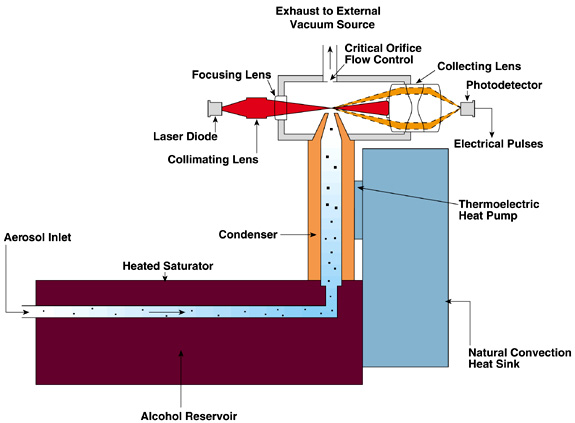Description of the condensation nuclei counter (CNC)
This information (and the figure) come from TSI's website.
CNC Photos
Construction Schematic for rack-mounted CNC box
General Operation
During operation the CNC causes alcohol to condense onto particles in the sample flow, creating aerosol droplets large enough to be detected efficiently using a light-scattering technique. Upon entering the CNC, the sample passes through a saturation block where alcohol evaporates into the sample stream, saturating the flow with alcohol vapor. The sample then passes into a vertical condenser tube cooled by a thermoelectric heat pump. Here the alcohol supersaturates and condenses onto virtually all particles with diameter greater than 0.01 um, regardless of particle composition. Droplets leaving the condenser tube pass one at a time through a single particle counting optical detector. The pulse of light scattered by a drop traversing the beam is collected and focused onto a photodetector and transformed into an electrical signal. Different CNCs have different minimum cut size (i.e., smallest diameter of particle that can be counted).
| Model Number | Lower Cut Size | Working Fluid |
|---|---|---|
| TSI#3010 | Diameter > 10nm | Butanol |
| TSI#3022A | Diameter > 7nm | Butanol |
| TSI#3760 | Diameter > 14nm | Butanol |
| TSI#3775 | Diameter > 4nm | Butanol |
| TSI#3781 | Diameter > 6nm | Water |
| Brechtel#1710 | Diameter > 6nm | Butanol |
| Aerosol Devices Magic | Diameter > 5nm | Water |
 CNC Schematic
CNC Schematic
